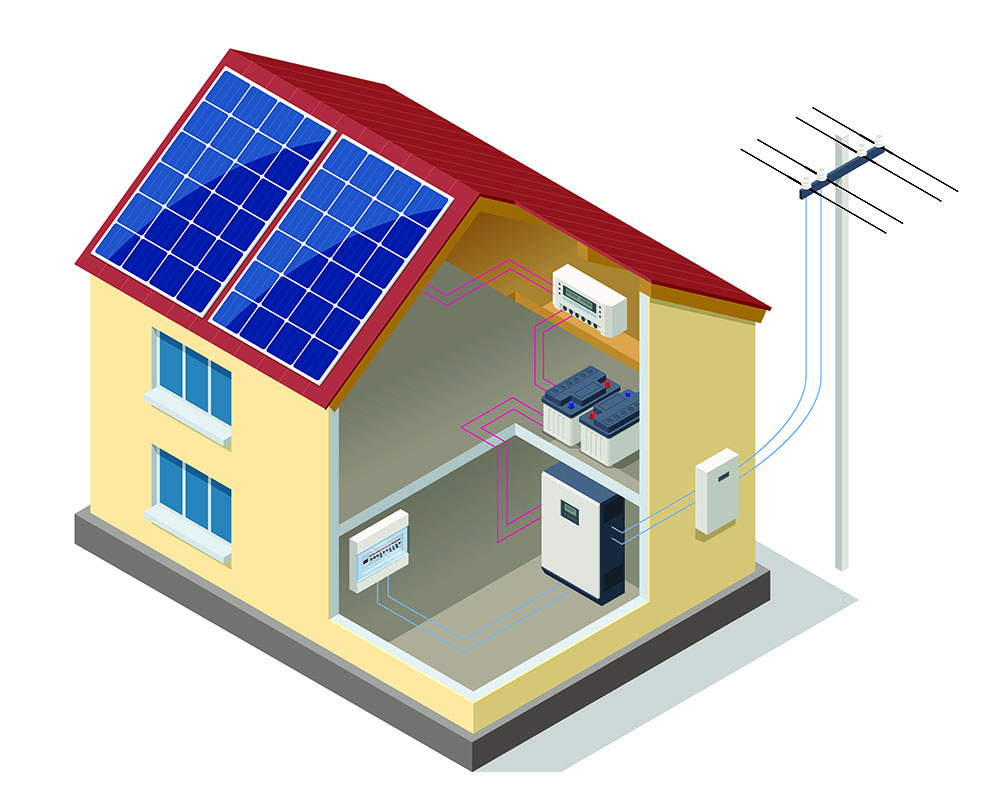Using renewable energy, like solar photovoltaic, to generate electricity for direct use and to electrify other sectors significantly reduces greenhouse gas emissions. Yet, the intermittent nature and dependence on solar irradiation – the amount of energy the sun puts out at a time – complicate the operation of the power network. Home battery storage systems can assist in multiple ways.
The world is currently undergoing a transition to a decarbonised energy system – a shift towards renewable energy and electrification. Increased use of renewable energy systems and electrification of road transport feature prominently in internationally accepted strategies for emission reduction. At the University of Malta, the Empowered Consumer-side Battery Energy Storage Systems for Enhanced Network Reliability (EMBRACE) project contributes towards advancing battery storage systems to facilitate in speeding up this transition.
The project, led by a team from UM’s Department of Electrical Engineering including Prof. Cedric Caruana (principal investigator), Prof. Reiko Raute, Muhammad Hussnain, and Kurt Farrugia, focuses on home battery storage systems. These systems are typically of relatively lower capacity, owned and operated by consumers, and distributed on low voltage (LV) feeders in connection with mainly photovoltaic (PV) systems.
A Solution for Power Instability?
The mismatch between the PV generation pattern and present-day household energy use, which reflects busy lifestyles, leads to excess power availability at the peak PV generation. As the number of installed PV systems continues to increase, this gives rise to reverse power flow where the excess PV generation flows from the households to the feeder substation instead of the typical flow (from substations to households). Reverse power flow can cause voltage rise and feeder overload issues. Moreover, concentrated charging of electric vehicles in the evenings intensifies the conventional peak demand and associated voltage drop. Thus, the humble LV feeders have evolved into front liners in experiencing the impact of the decarbonisation process.
The integration of battery storage systems with rooftop PV systems is increasing, with authorities offering support schemes to offset the capital expenditure. Home battery storage systems are mainly operated in self-consumption mode, where the excess solar energy generated is stored for later use. This would essentially offset electricity consumption from the power network and, in turn, lower the consumers’ electricity bills.

EMBRACE Change
The consumer-oriented objective and the independent operation of individual battery storage units restrict the offering of reliable support to the stability and power quality of LV feeders. The EMBRACE project proposes the increased functionality of home battery storage systems, in which their control algorithm is enhanced to allow a hybrid mode of operation. In addition to the conventional self-consumption operation, the battery storage units will be able to offer network support services at critical periods of the day to improve the network conditions.
A single consumer-side battery storage system will be relatively small to influence the feeder operation; however, as the number of installed systems continues to grow, the units can be aggregated to coordinate efforts and provide an effective network service. Home battery systems will adjust the operating pattern, reserving a percentage of the available battery capacity for use by the network, thus ensuring availability when the service request is received.

(Image provided by Prof. Cedric Caruana)
Power to the People
The EMBRACE project proposes that the aggregate network service is provided against remuneration, based on the availability and exchange of service units. The remuneration aspect opens a novel market for consumer-side battery storage systems, enhancing the financial feasibility and potentially leading to increased capacities on LV feeders. As the remuneration aspect rises, so does the importance of measuring and quantifying individual contributions to the network service. For this reason, the EMBRACE team is developing a solution for measuring and quantifying the exchanged service units.
The EMBRACE project uses modelling tools to assess the potential network service contribution of aggregated home battery storage systems to LV feeders in the Maltese scenario. Whilst considering the increased adoption of such systems, the team is working towards initial rates for the proposed remuneration scheme calculated based on the Maltese feed-in and electricity tariffs. The project empowers the uptake of home battery storage systems and consequently the consumers of such systems to enhance their active role in the ongoing energy transition.
The Project Empowered Consumer-side Battery Energy Storage Systems for Enhanced Network Reliability (EMBRACE) is financed by Xjenza Malta, through the FUSION: R&I Research Excellence Programme (Grant Number REP-2023-034).





Comments are closed for this article!